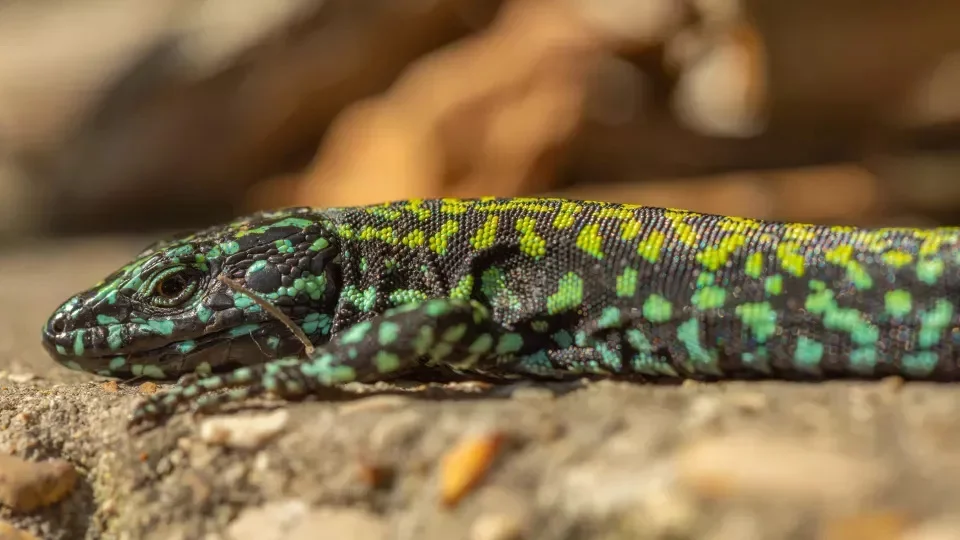Body shape, color, and behavior often evolve together as species adapt to their environments. Researchers from Lund University in Sweden investigated this phenomenon in a particular species of large, bright green and aggressive common wall lizard found near the Mediterranean Sea. They found that a unique cell type may have played a key role in this co-evolution.
Adaptation is a genetic change that results in increased survival in the environment. This can affect colour, shape and behavior. But the genetic basis of how it works still remains a mystery.
In a new study, evolutionary biologists combined fieldwork and DNA analysis to examine large, green, aggressive and sexually conspicuous wall lizards from the Mediterranean region. They discovered a set of genes responsible for the lizard’s Hulk-like appearance.
Examination of neural crest cells
“All the tissues and organs behind the hulk-like appearance develop from cells called neural crest cells, which are formed in the early stages of the embryo. We believe that the cells underlying changes in shape, color and behavior are organized together and therefore the traits evolve together,” says evolutionary biologist Natalie Feiner from Lund University. .
The research team studied a common wall lizard, which has a green-black color, impressive body size and aggressive behavior. Men with this look appeared thousands of years ago, not far from modern Rome, and showed that they dominated men with other color combinations. This led to the spread of Hulk lizards throughout Italy.
“Our knowledge of neural crest cells comes almost entirely from a few model organisms such as mice. We are currently mapping this cell type in lizard embryos to understand how events like the Hulk lizard might develop,” says Natalie Feiner.
Over the next few years, Feiner and his team will conduct more field research, establish breeding groups, and perform advanced genetic analysis, including using the CrispR-Cas9 gene editing technique. All aimed at determining the role that neural crest cells play in the intertwined evolution of color, form, and behavior.
“Our focus is on lizards, but our findings are likely applicable to all animals with neural crest cells, which include about 70,000 vertebrate species. Our work provides a possible explanation for how evolution works, while also being the beginning of many new lines of research,” he says.













